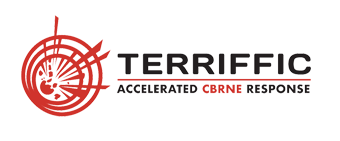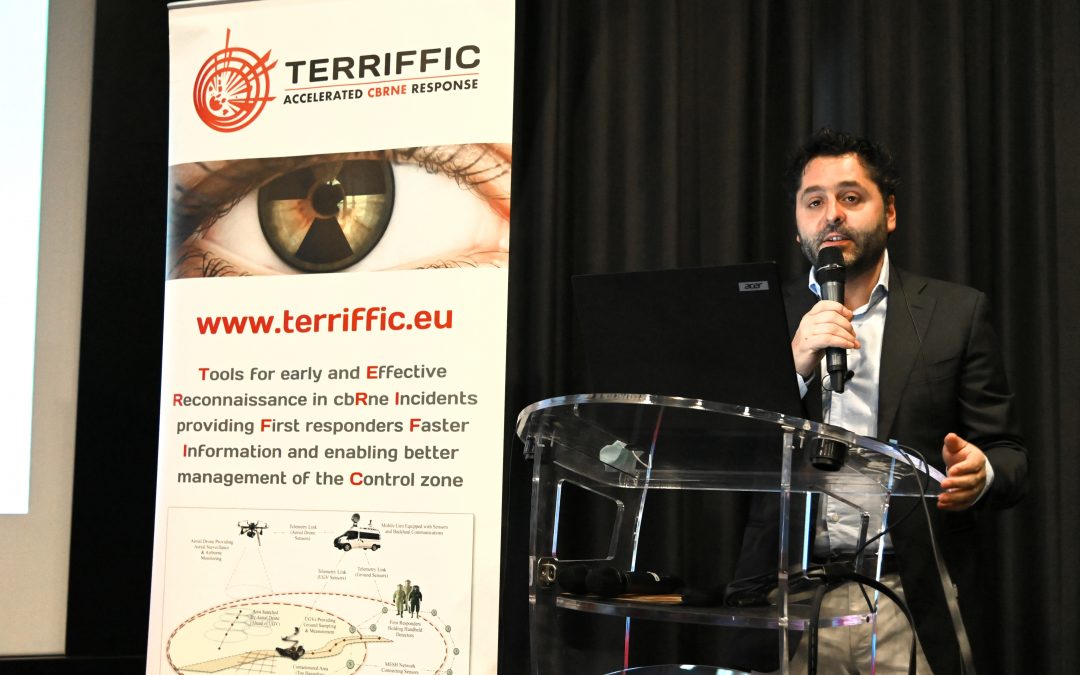What an excellent day we had this week at the TERRIFFIC final Public Workshop, kindly hosted at the Entente Valabre near Aix-en-Provence. The project coordinator, Arktis Radiation Detectors, and indeed all of the project partners, were proud to welcome the audience of CBRNe practitioners and experts to the aerial firefighting college in the south of France.
It was very satisfying to meet together in person after the past 18 months of travel restrictions for this one day Workshop. The event was also live streamed for those that were unable to attend in person and we were delighted to have so many other experts join us remotely.
As well as the results of the Field Exercise and Final Trial, the audience were given more in-depth details of the various technologies developed in the project and the potential impact they could have on the CBRNe world. A new project video that tells the story of the trials and the technology that has been developed was given its first airing and is now available for you to watch on our home page, as well as on YouTube.
Central to the project has been the ongoing trials campaign in France and Slovakia, involving practitioners throughout and the use of real radioactive sources to test the added value of the TERRIFFIC System in realistic scenarios. The methodology and assessment was explained and we were pleased that this approach was positively received, in particular by the members of the Advisory Board. The benefits of implementing a quantitative methodology to assess this kind of global system were clearly appreciated.
A practical demonstration was also held at the Fire Officers College (ENSOSP) in the afternoon, so that the workshop attendees could see at first hand how the technology worked and the individual components delivered improved situational awareness to RNe incident commanders.
During the workshop, the project partners explained the results of the technical developments in the project and outlined the impact that it is very much hoped they will have on the European RNe community in particular.
- The world’s smallest gamma camera, developed by CEA in France, that can be mounted onto the robot or drone that were specially adapted by Nexter and Aeraccess respectively
- A handheld beta detector that can identify beta radiation in an environment with high levels of gamma radiation present
- A Flat Panel Gamma detector (SiPR), developed by Arktis Radiation Detectors. The FPG detector can also be mounted on the robot and drone
- Plume modelling software, developed by École Centrale de Lyon, which takes the data from the detectors and uses it to forecast the intensity and spread of the radiation plume
- Mobile neutron detector also from Arktis, transported in the TERRIFFIC converted van and deployable quickly at an incident
- CBRNe Frontline from Bruhn NewTech, which accumulates all of the data supplied by the detectors and plume modelling and presents it in a simple to use way on the ccomputer screens inside the van. Used by the incident commander to have significantly better situational awareness, so crucial to managing an RNe incident of course
- The innovative use of augmented reality to help commanders visualise an incident and the assets deployed through a pair of Microsoft HoloLens glasses

